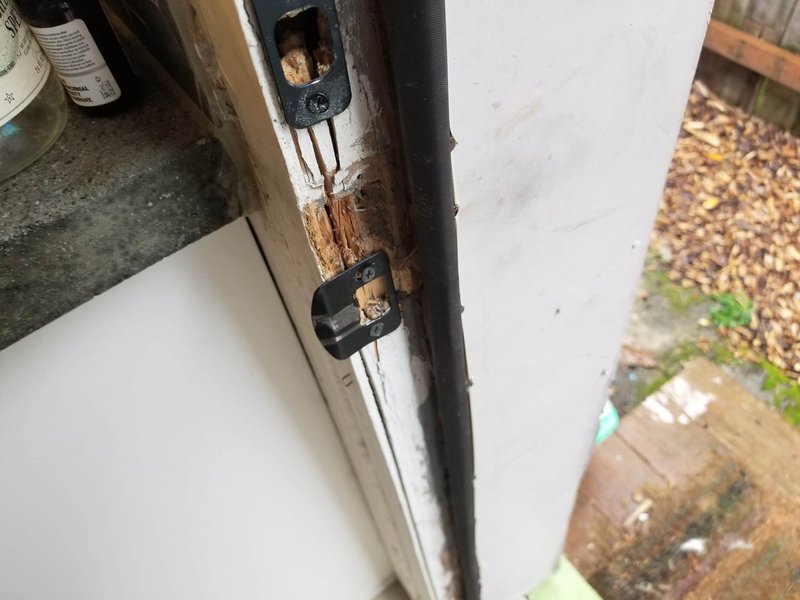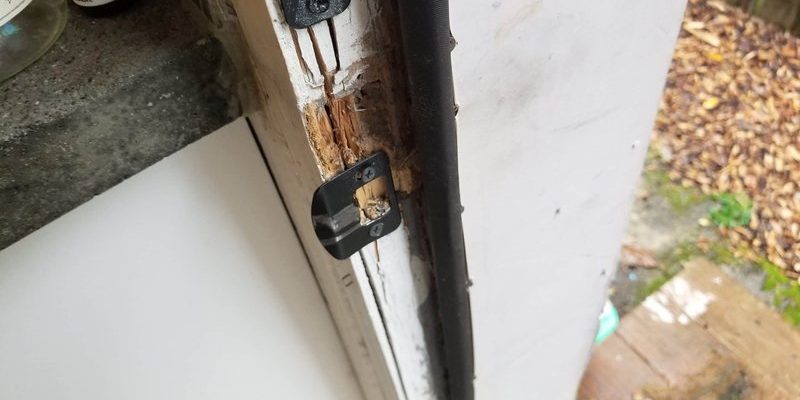
Honestly, a misaligned latch bolt isn’t just about convenience. Over time, slamming or forcing the door can wear out the lock, damage the frame, and even mess with your door’s security. But the good news? Fixing this is usually a hands-on, beginner-friendly repair. You won’t need a whole toolbox or advanced troubleshooting skills—just some patience, a Phillips screwdriver, and a little know-how about how these remotes and latches work.
Let me walk you through how to realign a handleset latch bolt that’s misaligned, with clear steps and plain-English advice. Whether your handleset is from Kwikset, Schlage, Yale, or another common brand, these solutions work for most standard residential locks. If you’re ready to get your front door closing smoothly again, here’s what you need to know.
Why Do Handleset Latch Bolts Get Misaligned?
Let’s start with the basics: *why* does this happen in the first place? In most homes, door handlesets and latch bolts take a fair bit of daily abuse. Every time you open or close the door, the bolt moves in and out of the strike plate (that metal piece on the door frame). If things don’t line up just right, you start running into problems.
Common causes include:
- House settling: Homes shift with age, making doors hang a little crooked.
- Temperature or humidity changes: Wood swells and shrinks, nudging doors out of alignment seasonally.
- Loose screws: Handleset or hinge screws work loose over time, shifting the position of everything.
- Repeated slamming: Slamming the door can knock things out of sync faster than you might think.
You might be wondering, “Is my remote-style handleset more prone to this?” Not really—the brand (Kwikset, Schlage, Yale, etc.) or whether it’s a code entry model typically isn’t the main issue. It’s usually just wear, tear, or environmental changes. So, if your bolt isn’t syncing with the strike plate, you’re in good company.
How To Spot a Misaligned Latch Bolt
Here’s the thing: not every stubborn door is suffering from latch alignment problems. Sometimes remotes run out of battery, locks need to be reset, or something else is at play. So, let’s make sure you’re actually dealing with a misaligned latch bolt and not a different handleset issue.
Look for these signs:
- The door only closes if you lift or push on it: If the bolt won’t slip easily into the frame, you probably have an alignment issue.
- You see rubbing or gouges on the bolt or strike plate: Scratches mean the two aren’t lining up cleanly.
- The bolt gets caught or doesn’t fully extend: If you feel resistance when turning the handle, the latch may be hitting the edge of the plate instead of sliding in.
- Remote or keypad locks don’t engage smoothly: Electronic handleset remotes sometimes fail to lock or unlock fully when things are out of alignment.
If any of these sound familiar, it’s safe to say your latch bolt is misaligned. Now, let’s get to the hands-on fix.
Step-by-Step: Realigning a Handleset Latch Bolt
When it comes to realigning a handleset latch bolt, the approach is surprisingly straightforward. Think of it like syncing a remote or pairing a device: you want the moving part (the bolt) to match up perfectly with the stationary part (the strike plate).
Here are the main steps:
- Check the hinge screws first: Use a screwdriver to tighten all the hinge screws on both the door and the frame. Loose screws can cause the entire door to sag, which shifts the alignment of the latch bolt. Don’t skip this — it’s the easiest fix and often solves the problem.
- Test the latch bolt: With the door open, operate the handle and watch the bolt. Make sure it moves smoothly in and out. If not, you may have an internal handleset issue—some models can be reset or need new batteries if they’re electronic.
- Inspect the strike plate: Close the door slowly and see where the bolt is hitting. Is it high, low, or too far to one side? You want it to slide straight in without resistance.
If the bolt hits above or below the strike plate, try tightening or loosening the screws on the plate and hinges. Sometimes shifting the plate just a fraction of an inch does the trick. For bigger misalignments, you might need to remove the plate, reposition it, and drill new pilot holes.
Adjusting the Strike Plate for a Perfect Fit
If tweaking the hinges and tightening screws hasn’t done the job, the next step is to adjust the strike plate itself. This is like troubleshooting a remote when it won’t pair—it can take a few tries to get it just right.
Here’s how to do it:
- Remove the strike plate: Unscrew it from the door frame. Check for old screw holes or wood damage—sometimes you’ll see evidence of past fixes.
- Mark the new location: With the door closed, use lipstick, chalk, or a felt-tip marker to color the edge of the latch bolt. Close the door gently to see where it hits the frame. Mark this spot clearly.
- Drill new pilot holes: Once you’ve marked the new spot, drill small pilot holes for the screws. This helps avoid splitting the wood.
- Reattach the strike plate: Line up the plate with your new markings and screw it in. Test the door. You may need to repeat this process—just like syncing a remote sometimes takes a few tries.
Pro Tip: If the bolt itself is too tight a fit, use a metal file to gently widen the opening in the strike plate. Take it slow—you can always remove more material, but you can’t put it back.
What If Your Handleset Is Electronic Or Has a Keypad?
Now, some homes have electronic locksets with remotes, codes, or keypads (think Schlage Encode, Kwikset Halo, or Yale Assure models). Alignment issues can cause all sorts of baffling symptoms—sometimes the lock won’t engage, you’ll need to reset it repeatedly, or the battery drains faster due to the extra strain.
Here’s what to watch out for:
- Lock motor struggles: If you hear a buzzing or clicking when you try to lock/unlock, the bolt might be stuck against the plate.
- Error codes or beeps: Many remotes or keypad locks flash an error or beep if the bolt can’t move freely. Check your manual for troubleshooting codes.
- Pairing issues: Some smart locks won’t sync (pair) correctly if the hardware isn’t aligned. Always fix the physical alignment before diving into software resets or battery swaps.
The same physical fixes apply: tighten hinges, adjust the strike plate, and make sure the bolt slides easily. If you’re still having trouble after realignment, check for firmware updates or reset the unit—just like you’d reboot a remote or smart device.
Maintaining Your Handleset After Realignment
It’s tempting to call it done after your bolt slides like new, but regular maintenance keeps problems from creeping back. Doors and handlesets need a little TLC—think of it like changing the batteries in your remote before they run out.
Best practices for long-term handleset health:
- Tighten screws every few months: Latch and hinge screws loosen as you use the door. A quick check keeps things solid.
- Lubricate moving parts: Once or twice a year, use a dry graphite lubricant on the latch bolt—never oil, which attracts dust and grime.
- Check for swelling or warping: If your door sticks seasonally, look for signs of water damage or swelling and address with weatherstripping or minor planing.
- For electronic models, replace batteries on schedule: Low battery power can mimic latch problems. Don’t wait for the lock to fail or for the code entry to glitch.
Staying on top of these basics means you’ll spend more time enjoying a smooth-opening door and less time troubleshooting problems.
When To Call A Professional Locksmith
Honestly, most latch bolt misalignments are DIY fixes. But sometimes things get a little more complicated. Maybe your handleset is very old, the wood is split, or the latch still won’t sync up after all your adjustments.
Here’s when to wave the white flag and call a pro:
- The latch bolt or door frame is seriously damaged: If the wood around the latch is cracked or the bolt is bent, you might need parts replaced, not just realigned.
- Handleset won’t reset or pair after alignment: On smart locks, pairing issues sometimes hint at deeper internal problems.
- You’ve tried everything and nothing works: There’s zero shame in asking for help. Locksmiths have the right tools, spare parts, and experience to diagnose and fix stubborn cases fast.
The cost is usually pretty reasonable, and you’ll have peace of mind knowing your home is secure.
Does Handleset Brand Matter For This Fix?
You might be wondering if the brand—Schlage, Kwikset, Yale, or a universal model—changes anything about the realignment process. Here’s the short answer: it doesn’t, at least for most standard residential handlesets.
All latch bolts work by sliding into a strike plate. The way to realign them is nearly identical, whether your handleset has a remote, requires a key, uses a code, or combines both. The only exceptions are high-security or specialty locks, which might use reinforced plates or unique mounting hardware.
If you have a smart lock, always check the manual for troubleshooting steps—sometimes a reset or firmware update is needed if the lock gets out of sync after physical adjustments. But for the rest, it’s all about getting that bolt and plate to line up cleanly.
“If your door used to close perfectly and now it doesn’t, it’s almost always fixable with a little patience, a screwdriver, and a calm approach. Don’t overcomplicate it—one careful adjustment at a time, and you’ll get there.”
Wrapping Up: Enjoy Your Smooth, Secure Door
Dealing with a misaligned handleset latch bolt can be one of those little household annoyances that slowly drives you up the wall. But with a few easy steps—tightening screws, adjusting the strike plate, and checking your electronic settings—you can usually get things back in sync without much hassle.
Remember, most latch alignment issues boil down to a door, frame, or strike plate drifting out of position. Regular maintenance and a bit of troubleshooting will keep your door operating like new, no matter if you’re using a Schlage, Kwikset, Yale, or any other handleset brand (remote, keyed, or keypad). If you hit a wall, there’s no shame in calling in a pro for backup.
In the end, a door that opens and shuts smoothly just feels right. Here’s to making that satisfying *click* part of your daily routine again.
